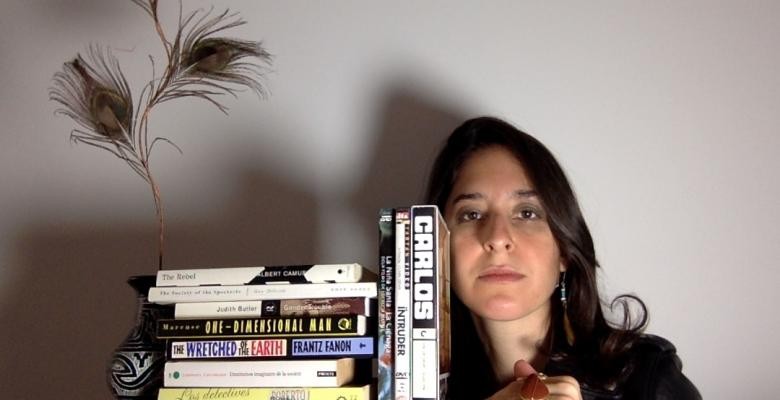Reimagining the Core Curriculum Through the Eye of a Camera

Alhelí Alvarado-Díaz (GSAS’02,’09) is looking at the Core Curriculum through a new lens. An adjunct professor in Contemporary Civilization, she has added a component of filmmaking to her course. She asks her students to take video cameras and head off campus to conduct interviews inspired by foundational texts they have read that semester.
“I want my students to be creating in addition to reading,” says Alvarado-Díaz, who earned her doctoral degree in history at Columbia and has lectured in the Core since 2010. She hopes their interviews can add a dynamic element to the Core beyond classroom discussion. She is among 18 faculty members who won a University Provost’s Hybrid Learning Course Redesign and Delivery Grant in spring 2015; the grants are awarded to professors developing innovative pedagogy using technology.
Her project is called “Shooting the Core: Reinterpreting Core Texts through Film, Documentary and Reportage.” The grant helps pay for the use of camcorders and microphones that students borrow for their interviews.
Class members work in pairs or groups to come up with a film title and decide what questions to ask their subjects. Later they edit the films and decide whether to add music or special effects. In “Metals in Manhattan,” Adi Milstein (CC’18) and Alexandra Solovyev (CC’18) draw on a passage from Plato’s Republic in which he proposes that there are three types of human nature— gold, silver and bronze.
They use this idea to pose questions about free will and the American dream to subjects including an immigrant from Russia, two tourists from Scotland and a Moroccan-born street vendor. During last year's spring semester, when her students read the work of Protestant reformer Martin Luther, they also did video interviews with pastors and priests about how a religious community is born and developed. These conversations were part of the second set of video productions assigned during the fall semester.
“Alexandra and I enjoyed exploring the city and talking to different types of people and hearing their opinions,” Milstein says. “We thought it was really fascinating to connect ancient texts to modern life in a way that can be made accessible to anyone.” She added that the interviews were a challenge “because of the way that everyone in New York seems to always be in a rush to get somewhere.” And even when people were willing to stop and talk, she says, some were intimidated by the questions.
Alvarado-Díaz believes talking to non-academics about classic books is a way for students to better understand the texts they are studying. “It can help answer the question, ‘Why should I read Plato in 2016?’” she says. In addition, leaving Morningside Heights to conduct interviews deepens students’ knowledge of the city. Students are required to evaluate two films other than their own and write an essay reflecting on how their own films connect to their chosen texts.
After growing up in Puerto Rico Alvarado-Díaz earned her undergraduate degree at Johns Hopkins, but she has long been interested in independent film. David Lynch’s 1990s TV series Twin Peaks and 2001 film Mulholland Drive were “liberating experiences,” she says. He’s a director who shows that “reality is in flux and identities are ambiguous.” She also admires the films of Olivier Assayas (Irma Vep, Clouds of Sils Maria) and Agnès Varda (Cléo from 5 to 7 and The Gleaners and I), among others.
“Their protagonists are ambiguous, philosophical, adventurous and independent,” she says. “I identify with the characters and the stories told.”
Her other pedagogical interests include cultural history, politics and feminism, and she encourages her students to share their reactions with their classmates when key passages of texts come up for discussion in class. “It creates a sense of camaraderie,” she says. “They become closer throughout the semester.”
To learn more about Shooting the Core, please click here.